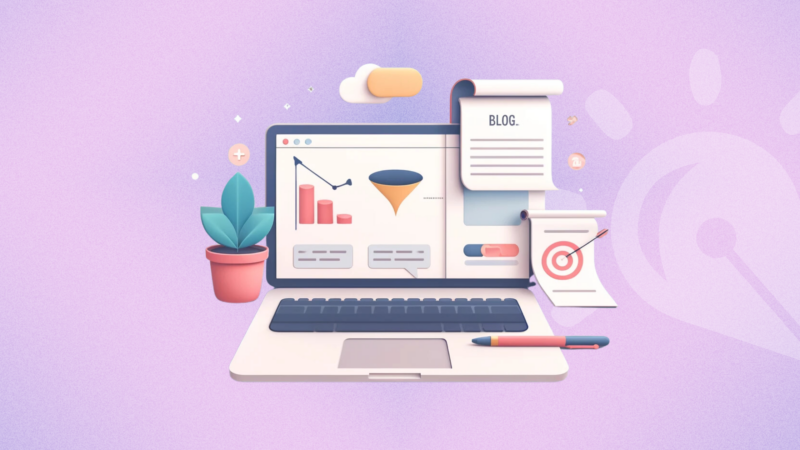Salesforce. Microsoft. Adobe. Google.
While you have definitely heard of these technology titans and used one of their products at least once, they also fall under another industry umbrella term: software as a service (SaaS).
Software as a service is defined as a software distribution model wherein a service provider hosts software, platform, and/or program services in a data centre for customers to access online. Customers who have subscribed to this service can then simply access the software using a program or web browser.
Often referred to as “on-demand software,” the SaaS industry is a burgeoning and rapidly evolving market today. According to Statista, revenue in the SaaS market is projected to reach a whopping US $282.2 billion in 2024. By 2028, the market volume is estimated to hit US $374.5 billion with an annual growth rate of 7.3%.
Naturally, thousands upon thousands of companies from all over the world are eagerly hoping to get a slice of this pie, which has resulted in an oversaturated market.
So, how do you stay ahead of the curve and stand out in a highly competitive and overcrowded marketplace? Is there an easy way to understand how to market SaaS products successfully? To cut your slice of the market share, your best SaaS marketing strategy, much like your product strategy, has to continuously evolve.
Whether you are just getting started in the big, wide world of SaaS marketing or looking to level up your SaaS growth marketing strategy, we have curated some of the best SaaS marketing strategy techniques in 2024.
In this blog, we will explore tested and proven SaaS growth marketing strategies designed to generate traffic and leads, attract prospects, drive conversions, and further propel business growth.
Understanding SaaS Marketing
Before diving into the best SaaS marketing strategy approaches to implement in your organization, it is worth taking a step back to understand what SaaS marketing is. At its core, SaaS marketing is any marketing strategy that can be used by SaaS providers to generate traffic, attract prospective customers, win qualified leads, and drive conversions.
However, there are several key differences between SaaS marketing and regular digital marketing strategies:
- SaaS products are typically offered as a subscription-based service rather than a single purchase point transaction.
- SaaS marketing strategies focus on the following core tenets:
- Attracting quality prospective customers
- Nurturing leads at every stage through the sales funnel
- Retaining customers for a steady monthly or yearly revenue
- Enhancing revenue through account expansion
- Measuring effectiveness and monitoring performance
- Most SaaS products in the market are for a B2B audience, although some applications follow the B2C model. However, this key difference greatly impacts the customer journey, lead generation, marketing funnel, customer churn, pricing, and more.
- In SaaS marketing, the goals are to identify and understand your target audience, launch a product, build brand awareness, generate quality leads, acquire and retain customers, and constantly and consistently create product value.
- Since SaaS growth marketing strategies value revenue over time rather than single transaction points, the customer journey and sales cycle are much longer than traditional marketing.
SaaS marketing strategy is a highly complex, long-term play that features a myriad of effective strategies that work together to market the business and product suite.
The SaaS Marketing Landscape
With an oversaturated market, fierce competition, and rapidly evolving product solutions, SaaS marketing is more challenging today than ever before.
Creating a winning SaaS marketing strategy requires creativity, willingness to think outside the box, data-centricity, and a bold penchant to stay agile and incorporate new tactics to capture greater market share.
Before we start exploring how to market SaaS products, there are a few SaaS marketing basics to research and define before putting your plan into action.
Understanding Your Target Audience
To market your product and services effectively, you need to first understand who you are selling it to. Start by identifying their key demographics, pain points, challenges, and needs clearly. By learning what bothers your customers and what their real needs are, you can better align your solutions with their goals and objectives and encourage them to take action.
To unlock the voice of the customer, create user, buyer and/or product personas for the different types of customers in your target market. To create effective and accurate personas, you can use the following methods:
- Customer surveys and polls
- Customer interviews
- Market and user research
- Sales call recordings
- Insights during customer discovery
- User behaviour tracking
- Product heatmaps
- Empathy maps
- SEO keywords
Take the time to understand your audience and you will end up with a much more effective SaaS marketing strategy. If you choose to skip this step, you will likely end up wasting a lot of time, money, and resources on a half-baked strategy.
The Customer Journey
In SaaS marketing, a customer journey map refers to the path they take from the first point of contact, where they learn about your product, till they become paid users or subscribers of your product.
In B2B SaaS marketing, the customer journey is usually much longer than typical B2C marketing, given that the goal is turning prospects into loyal monthly or yearly subscribers, not one-time buyers.
Take the time to learn and understand how your prospect sees, hears, and experiences your product during different stages of the customer journey. This is a vital part of marketing to a wider pool more effectively.
There are five main stages of the customer journey, each of which represents various touchpoints between the organization and the prospective customer.

While this may vary slightly for different customers and may not always be linear, these are generally the stages of a typical customer journey:
1. Awareness
In this stage, the prospect first becomes aware of your organization, product and services.
This stage could happen passively (through an advertisement or a social media post) or proactively (searching for companies and products that fit specific needs or attending an industry conference to “shop” for potential solutions for their business).
2. Consideration
In the consideration stage, the prospect understands your company and the services you provide that could potentially address their business needs. Now, they will weigh the pros, cons, and alternative options to evaluate your services against a competitor.
They will also conduct additional research about your company and brand, check reviews online or with industry experts, and seek additional information to help them decide whether or not to make a purchase.
3. Decision
At the decision stage, the prospect has all the information they need to decide whether your product solution can address their needs, whether it fits their budget, scope and timeline, and ultimately, whether they want to purchase your product. In this stage, the prospect becomes a customer.
4. Retention
In the retention stage, you should focus on keeping your customers engaged, happy, and satisfied. Customer service and engagement are a key part of this stage to make sure they use your products and services to derive true value and will continue to subscribe to your product.
5. Advocacy
This is a vital stage wherein your loyal customers are extremely satisfied with your product and are happy to voluntarily advocate for your company and services. Examples of advocacy can include positive reviews, case studies, testimonials, referrals, and even participation in customer or user content.
At every stage, you will need different marketing strategies to help streamline the process for the prospect. You should be able to address their core queries or needs to help push them through the sales funnel or continue to be loyal customers after conversion.
For example, ads that provide basic information about your product will not be helpful to an existing customer who wants to have their issues addressed about a product feature they are struggling to master.
By identifying these important customer milestones and gaps that could cause potential friction in the process, you can continually optimise your customer journey for greater success rates.
Top SaaS Marketing Strategies
Now that you have a basic understanding of the various terms in SaaS marketing, let’s take a look at some effective SaaS marketing strategies that will boost your conversion and retention rates:
1. Content is King (and Queen)
Content is always king, and in a fiercely competitive market like the SaaS industry, driving the creative bandwagon can set you apart. According to a survey by Statista, among B2B marketers across the globe, 43% of respondents said they are planning to increase their content marketing spending in the next 12 months. In another 2022 survey by Statista, 80% of global marketers stated their content marketing strategy was very successful.
Various channels can be leveraged to build awareness and generate potential leads. Here are some of them:
Blog posts that educate and solve pain points
The simple blog post can serve as an incredibly powerful tool to create awareness about your company, brand, product, and services. Blog posts can help drive traffic to your website, boost your chances of getting found via Google search, and set up a foundation for you to establish yourself as an industry thought leader.
You can leverage blog posts to present:
- Solution-based content on industry trends
- Future-thinking ideas and potential solutions
- Current pain points in different sectors that your solution suite is currently addressing
- Other content that allows you to introduce your solution suite naturally and with relevance
Ebooks and white papers for in-depth dives
Publishing ebooks and white papers is a great way to dive a little deeper and truly showcase your knowledge and expertise in the industry. It allows you to show off your niche technological prowess as an SME and preferred solution provider in the industry.
Unlike blog posts, white papers and ebooks are highly educational and must be backed up by solid research, statistics, and evidence.
White papers can be published online to bump up your SEO or even be offered as a free digital download. Meanwhile, ebooks are a great way to generate leads by offering them as a free digital download to grow your email marketing subscriber list or assist sales with new potential prospects.
This in-depth media can also be leveraged during the consideration stage in the customer journey to provide potential customers with additional information about your solution. You can explain how it can address their business problems, encouraging them through the sales funnel.
Case studies showcasing customer success
Case studies and customer success stories allow prospects to really see the impact of your solution suite and how it seamlessly addresses real-world business problems. According to research by the Content Marketing Institute, 53% of B2B marketers said case studies and customer stories delivered the best results, followed by leadership e-books and white papers, short articles or blog posts, and research reports.
In SaaS marketing, case studies are all about storytelling. It allows prospects to read a great story about a specific real-world customer who has used your product to improve business operations and boost market growth. It also provides powerful, actionable evidence of what they can expect from your product and understand the potential ROI to help their decision-makers.
This helps build and solidify brand awareness and trust, encouraging your customers to recommend your services to others.
Embrace SaaS Content Marketing
When it comes to SaaS marketing, you have to play the long game for your content strategy to be impactful. B2B customer conversions can easily take months, which means your content marketing strategy for every stage needs to be bold, impactful, and educational.
As a solution provider, you need to showcase how your solution addresses their problems and business needs better than the competition.

Every customer prefers and craves a different form of content, so leveraging wider, carefully thought-out options will make it easier for them to find exactly what they are looking for.
2. Harnessing the Power of SEO
Search Engine Optimization (SEO) allows you to ensure your website is as search engine-friendly as possible. This helps drive organic traffic, boost your site’s visibility, improve brand awareness, and generate quality leads for your business.
Great SEO practices baked into the best SaaS marketing strategies can help reach and attract potential customers looking for software solutions to address their needs. The primary goal of your SEO strategy should be straightforward: appearing on the Google search engine’s first page in one of the top five spots.
SEO and content marketing strategies work hand in hand to identify topics and ensure your content directly answers the questions they are typing into the search engine.

Keyword research and targeting
Keyword research refers to identifying relevant keywords used by your target audience to search for your product or solve the problem they are facing. Here are a few strategies to get started with your keyword research and targeting:
- Analyze your website data to understand what search terms people are using to land on your site
- Identify your competitors and conduct a keyword gap analysis to create a keyword map
- Go through the customer journey to identify terms, keyword phrases, and keyword questions that keep popping up. Find out how your customers talk about their problems and your product
On-page optimization for better ranking
To optimize your content and improve your search ranking, there are a few techniques to include in your SEO strategy:
- Optimize on-page features such as the meta title, meta descriptions, image alt tags, title and header tags to ensure your content is as SEO-friendly as it is informative
- Optimize URLs and your internal linking process
- Consistently monitor your website speed, mobile responsiveness, and mobile-friendliness
- Regularly refine and update your content to ensure it is always optimized for relevant keywords
Building backlinks for increased authority
SaaS content is all about establishing industry authority and expertise. From your website content and product feature descriptions to in-depth white papers on the shifting trends in various sectors, building high-quality backlinks is critical to guarantee high search rankings.
Ranking algorithms have always heavily favoured backlinks as a sign of authority since they are difficult to achieve artificially. It is also why high-quality content is such an integral part of SaaS growth marketing strategy. Compelling content that is engaging, authoritative, and trustworthy is more likely to draw organic search traffic, get shared, generate backlinks, and garner interest.
3. Building Relationships on Social Media
When it comes to SaaS marketing, you have to go where the people are. Crafting a strong social media presence and strategy for your SaaS business is vital to widen and strengthen your reach.
Identifying the right platforms for your audience
To start, identify what platforms your target customers are using. Are they on LinkedIn for business thought leadership and B2B corporate marketing? Are they on Instagram and Facebook for brand awareness or community building? Or maybe they are on YouTube to gather informational video content.
Creating engaging social media content
Determining where your target audience is will help you strategically create relevant, informative, and shareable content for the right platform. This allows them to learn about your brand and solutions, engage in conversations, ask questions, and spread the word about your organization.
Video content is currently the reigning queen when it comes to content. Create engaging how-to product videos, customer testimonials, employee engagement videos, or even an annual holiday video with a call to action that encourages viewers to engage, share, and take the next step.
Building communities and fostering conversations
Build online communities on different social media platforms or even a customer portal, newsletter subscription, or online group. This allows users to connect, share their knowledge and expertise, and engage with you directly through meaningful and often insightful conversations.
You can further keep the conversations going using dynamic tools to gather insights and feedback such as webinars, surveys, polls, meet and greets, and more.
4. The Magic of Free Trials and Demos
Free trials and demos can be a powerful conversion tool that gives prospects a sneak preview of your solution.
Designing a compelling free trial experience
When you offer a free trial to potential customers, you are offering them the opportunity to experience the product, its core features, and functionality before they make a long-term commitment or payment.
With an intuitive trial and no up-front payment information required, you are further communicating to them that you are a trustworthy partner and can provide value that positively impacts the way they work.
Showcasing product value through demos
Demos allow potential leads to learn, experience, and understand the product, its features, and its value proposition without having to download and navigate through a new tool themselves. By having a strong demo led by a well-versed SME, you can showcase the full potential of the product.
You can also choose to gate the level of information in demos to further generate leads and movement in the marketing funnel.
Making it easy for users to sign up
Create a sign-up form that is easy and simple for users to register and offer incentives like a free trial, demo, or even a white paper to encourage users to take action.
Make sure you collect relevant information such as name, company, email address, and phone number to help out your sales team with potential opportunities.
5. SaaS Account-Based Marketing
SaaS account-based marketing is primarily a growth strategy that focuses on high-value accounts and key stakeholders through a highly personalized marketing strategy.
For B2B SaaS companies, this marketing strategy is a high-effort, high-reward play that involves the following stages:
- Identify the target audience
- Build a list of target companies
- Understand customer needs
- Select key channels to leverage
- Align Sales and Marketing teams
- Create and run a targeted ABM outreach campaign
- Measure and optimize according to the data acquired
6. SaaS Email Marketing Strategies
Email communications can be highly effective in engaging both prospective and existing customers. It is a clear, powerful tool to welcome new users, assist them during onboarding, announce product and customer updates, and more.
Regular emails and newsletters to your subscribers help make sure they are always in the know about your product and the value it provides. By providing valuable information in every email, it helps build better brand awareness and foster a long-term customer relationship.
7. Obsess Over Churn Reduction
The churn rate, or attrition rate, is the rate at which customers stop subscribing or doing business with a company over time. Carefully monitor churn rate and proactively incorporate strategies that address churn rate head-on.
Using the customer journey map is a great way to start. If you identify customers who are facing issues in user experience, create opportunities for granular help to support users when and where they want. If user activity or engagement starts to dip, reach out with relevant information about product how-tos, new features in the pipeline, or even customer check-ins to gather feedback, garner interest, and prevent churn.
Beyond the Basics – Advanced Strategies
In SaaS marketing strategy, there is no shortage of techniques, possibilities and opportunities to try something new to showcase value and set yourself apart.
Beyond the basics, here are a few advanced SaaS marketing strategy tactics to add to your marketing tool kit:
1. Referral Programs that Drive Growth
For B2B SaaS businesses, incentivized referral programs are one of the most effective and powerful marketing strategies you can use. By incentivizing happy B2B customers, you can leverage their networks to generate high-quality leads who are already primed to trust your product.
During the COVID-19 pandemic, 49% of B2B tech providers found customer referrals to be their most effective marketing tactic. Leads generated through referrals also boast a significantly higher conversion rate (30%) than other marketing channels.
To foster customer retention and loyalty, build a strong referral or loyalty program that can compel them to sing your praises and reward them for it. Whether it is access to a highly coveted product feature, a discounted rate for a year, or additional users to their existing package, make the offer enticing enough to encourage them to participate.
2. Partnering for Success
Joining forces with a complementary business or organization for a strategic partnership can be a great tool in your SaaS marketing strategy. It allows you to tap into a new, wider market and customer base and the opportunity to expand your solution offering to meet your existing customers growing needs.
You also get to collaborate with another organization’s technical, marketing, and sales resources to create greater value, brand equity, and strategies.
3. Building a Customer-Centric Approach
SaaS marketing focuses on generating subscribers who are happy with the product and willing to sign up for monthly or yearly plans rather than one-time buyers.
Customer retention, success, and satisfaction are imperative for a healthy and growing sales pipeline, particularly for subscription-based B2B SaaS models. Keeping your customers satisfied and happy with your product and services allows them to become loyal, lifelong customers which leads to consistent renewals, additional purchases, as well as upsells.
Make sure your customers feel seen and heard by prioritizing customer feedback, ensuring regular opportunities for feedback, and implementing improvements that directly address their needs and concerns.
Case Studies of Successful SaaS Companies
1. Square Yards

Square Yards is one of the fastest-growing property technology platforms for real estate and mortgages in India. It managed to scale organic website traffic and build traffic via multiple geographies by incorporating a content-driven marketing strategy. This involved creating SEO-optimized, localized content that was relevant to their target audience.
By partnering with WittyPen, Square Yards was able to successfully create over 1000 content pieces to boost their web traffic to over 1 million monthly organic visitors.
2. Nifty

New York City-based project management software firm Nifty was keen to identify a solution to assist in generating leads using a content-driven approach. They also sought to refine older content to improve search optimization and search rankings.
By collaborating with WittyPen, Nifty was able to create over 40 long-form, SEO-optimized articles and content specifically targeted towards MoFu and ToFu. By incorporating this powerful tactic in their SaaS marketing arsenal, their signups shot up by 30%. Moreover, their newly refurbished articles are continuing to steadily climb up the search rankings ladder.
Conclusion
In today’s constantly evolving and incredibly competitive SaaS industry, it can be daunting to create and evolve your marketing strategy to stay ahead of the curve. However, with the right partnerships and a data-driven approach to SaaS content marketing, there is scope for rapid growth. To stand out amid the competition, you must constantly and consistently take an agile, data-driven approach to your SaaS marketing strategy.
Whether you are just getting started in SaaS marketing or looking to diversify your SaaS content marketing strategies, WittyPen provides tested and proven SaaS marketing strategy tactics designed to generate traffic and leads, attract prospects, establish industry expertise, and drive business growth.
For more information about WittyPen’s SaaS content marketing services, check out our complete suite of content-writing services and relevant resources from our valuable partners including case studies, customer testimonials, and more.









